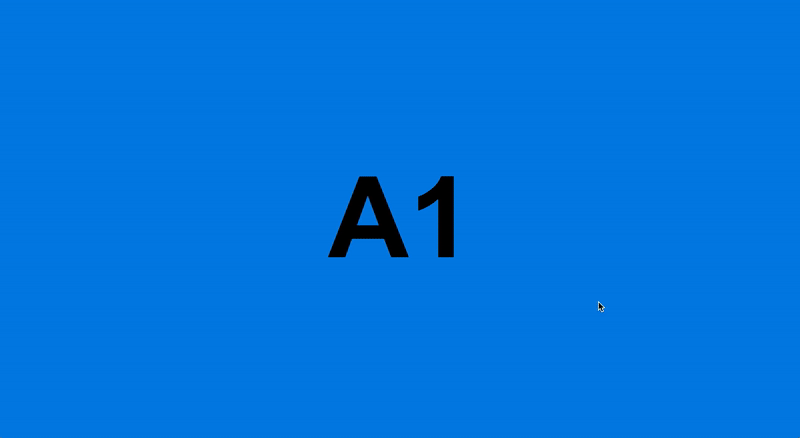deck3000
v1.0.12
Published
Slider component for the new millenium
Downloads
6
Maintainers
Readme

A slider component for the new millennium.
What it is
Simple! It's a slider component 😀 which can navigate (infinitely!) vertically ("sections") and horizontally ("slides", within a current section) in pure javascript.
What this component provides is a way to handle the basic and essential interactions of the slider itself. This will not provide you with the UI or anything like that; all the fun and responsibility of implementing the UI and interaction around the slider is all up to you!

Features
- Weighing in at a cute
~2kb(js)450b(css) - Infinite slides (vertical / horizontal)
- Scroll/Keyboard/Touch friendly
- Super smooth
- Super simple
- Super cute
Coming soon
- [x] Navigation updates URL and history (replaceState)
Getting Started
Include the module via npm i deck3000 or yarn add deck3000 and import it into your project.
import Deck3000 from 'deck3000';Very important You must also include the css that comes with the module!
// stylus, sass, etc.
@import 'deck3000/dist/deck3000.css';DOM Structure
Deck3000 requires the following structure from your HTML (see below)
- a parent container that includes the selector
js-deck3000 - sections must be a direct descendant of the parent container
- slides must be a direct descendant of a section
Note: if you plan on having elements that are siblings of a slide within a section (for example,some absolute positioned elements within a section) you MUST have a selector on each slide and declare that as a slideSelector option when instantiating Deck3000, otherwise all direct descendants of a section will be instantiated as a slide.
After Deck3000 successfully instantiated, a is-init selector will be attached to the parent js-deck3000 element.
Animation speed and easing are all done via CSS in addition to all the essentials of making the component work so don't forget to import the stylesheet!
<div class="mySectionClass js-deck3000">
<!-- First section -->
<div class="section" data-title="Museum project">
<div class="slide">
Slide one
</div>
<div class="slide">
Slide two
</div>
<div class="slide">
Slide three
</div>
</div>
<!-- Second section -->
<div class="section" data-title="Fashion editorial">
<div class="slide">
Section two - Slide one
</div>
<div class="slide">
Section two - Slide two
</div>
<div class="slide">
Section two - Slide three
</div>
</div>
</div> const Slideshow = new Deck3000({
slideSelector: '.slide', // (optional)
resetSlides: true,
keyboardEvents: true,
updateURL: true,
onInit: state => func,
onSectionStart: state => onSectionStart,
onSectionEnd: state => func,
onSlideStart: state => func,
onSlideEnd: state => func,
});
const onSectionStart = state => {
console.log(state); // This logs the state object below
};Callbacks exposes state
{
currentSectionElem: DOMNode, // current section
currentSlideElem: DOMNode, // currentSlide,
section: {
current: 1,
direction: 'next',
isAnimating: false,
next: 2,
prev: 0,
sectionLength: 3, // This is actually length - 1
},
slide: {
currentSlide: 0,
next: 1,
prev: 2,
slideLength: 2, // This is actually length - 1
}
}After Deck3000 instantiates, it will not mutate the structure of the DOM in any way aside from adding classes to sections and slides.
URLs
If you have set updateURL to true then you may attach a data-title="Whatever" to a section. This string will be converted into a slug e.g. Fashion brand -> fashion-brand and will be appended to the URL /fashion-brand when you navigate across sections. If you do set updateURL to true but do not attach a data-title attribute, then it will just use the index of the current section e.g. /0.
API
navigate('type', 'direction') | Navigate through sections/slides.
a.k.a The ✨🥩 of Deck3000
[Deck3000Instance].navigate(['section'/'slide'], ['next'/'prev']);
const nextSlideBtn = document.querySelector('.nextSlideBtn');
nextSlideBtn.addEventListener('click', () => {
Slideshow.navigate('slide', 'next');
});disableEvents(bool) | Toggles all (scroll/keyboard/swipe) events.
[Deck3000Instance].disableEvents(bool);
// One might want to disable scroll events
// (for ultimate peace of mind)
// during certain UI states of your site/application
const toggleOverlay = bool => {
if (bool) {
overlay.classList.add('is-active');
Slideshow.disableEvents(bool);
return;
}
overlay.classList.remove('is-active');
};Emitter
Deck3000 uses mitt for handling events. The Emitter is exposed so you can subscribe to navigate (section) and navigateSlide (slide) events if you wish.
[Deck3000Instance].Emitter.on('navigate', e => {
// Do something when navigating sections
console.log(e);
});
[Deck3000Instance].Emitter.on('navigateSlide', e=> {
// Do something when navigating slides
console.log(e);
});Thanks
- Built with Microbundle It's awesome 💃
- Also built with Parcel 🕺
